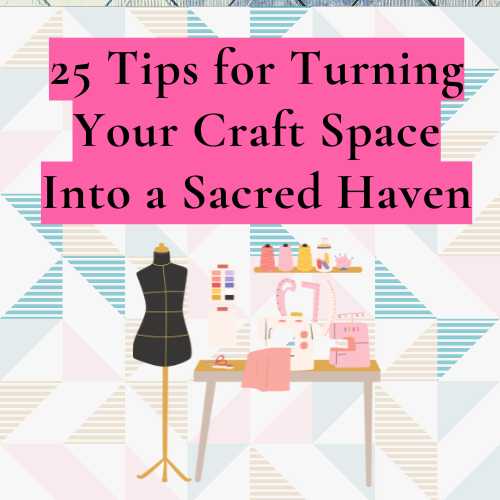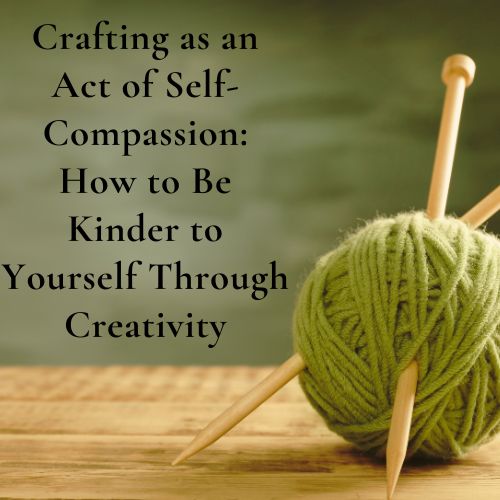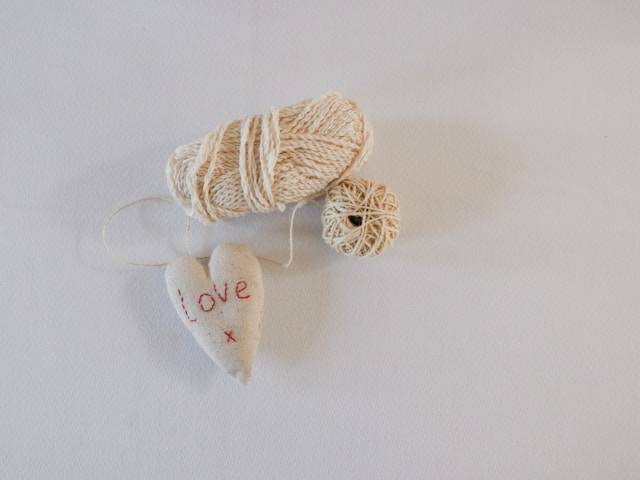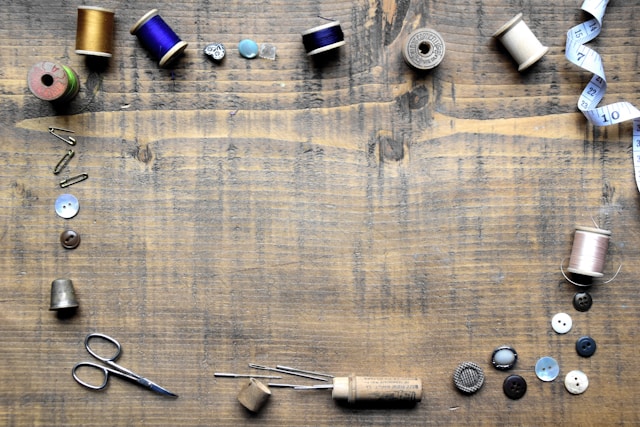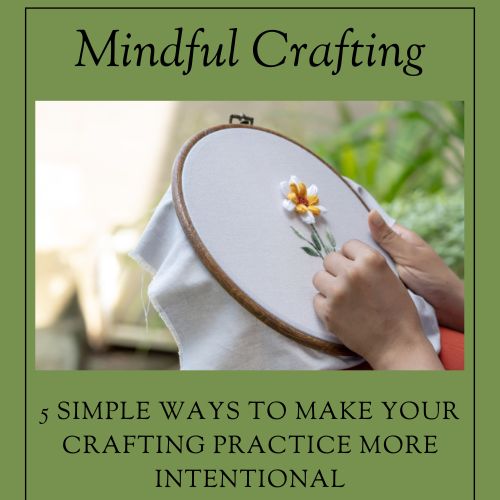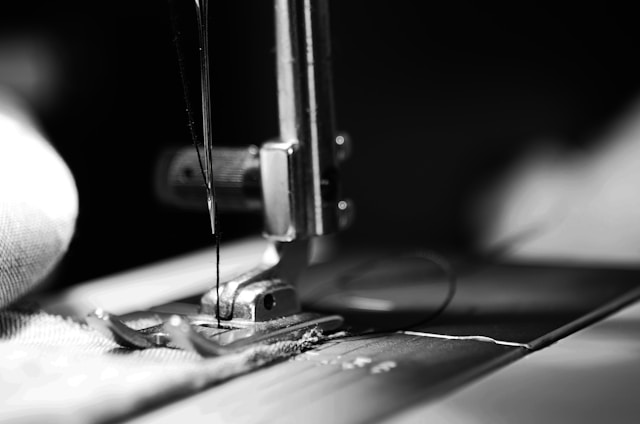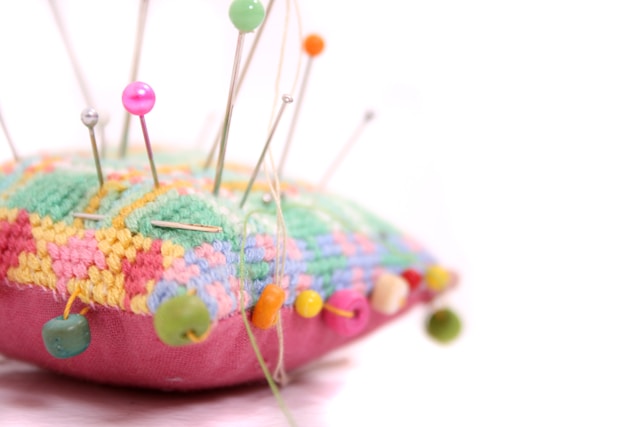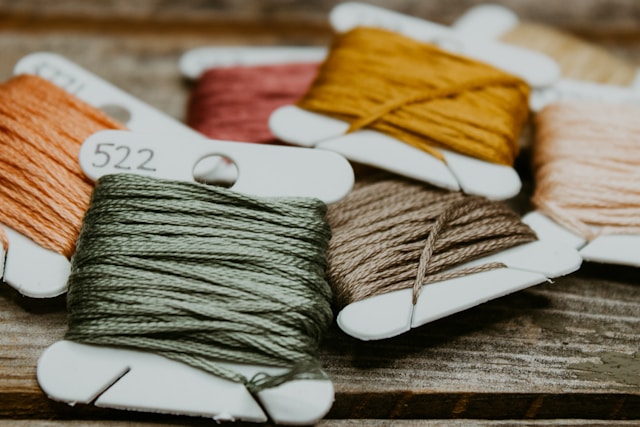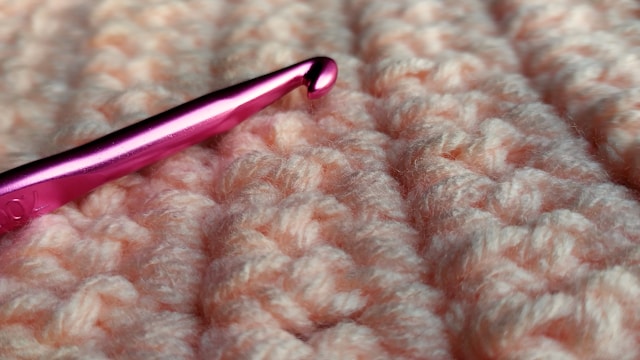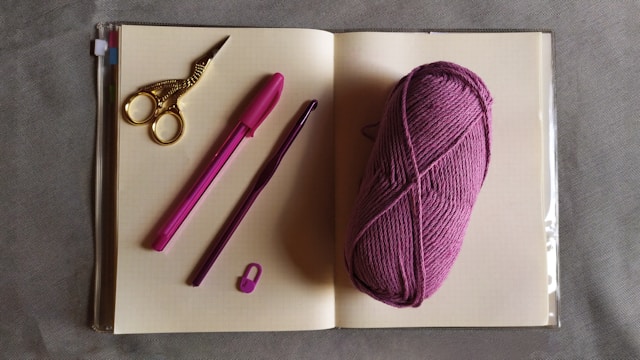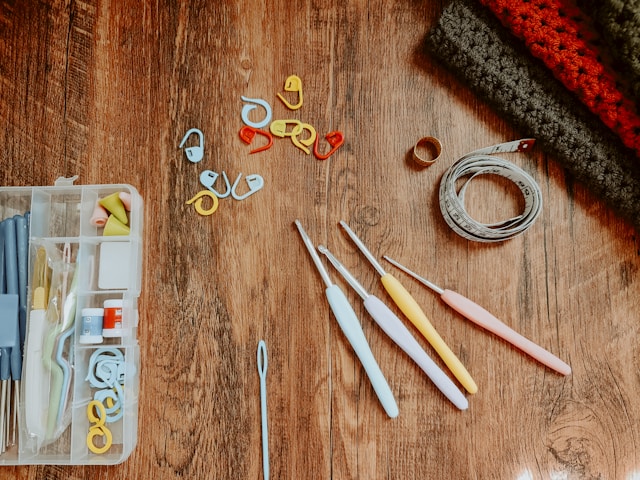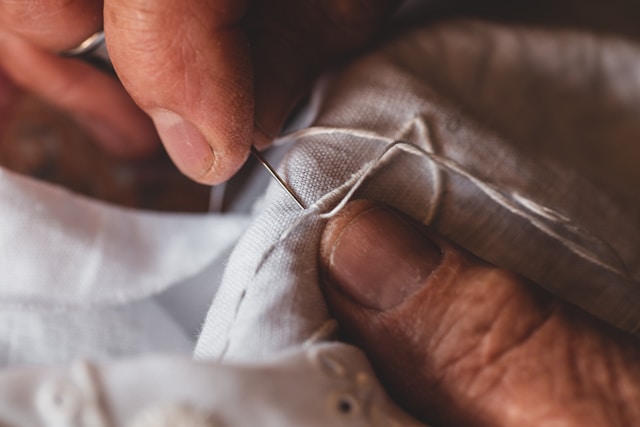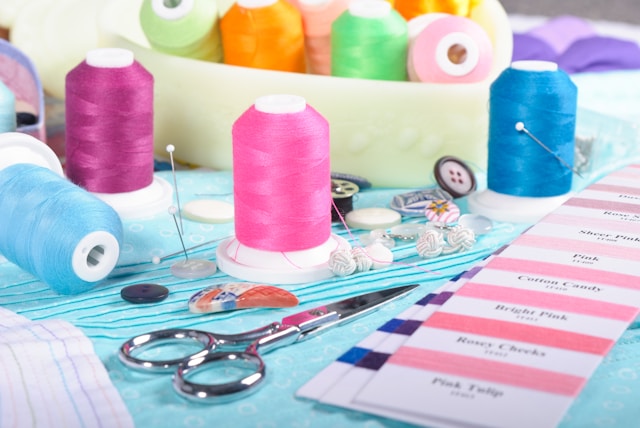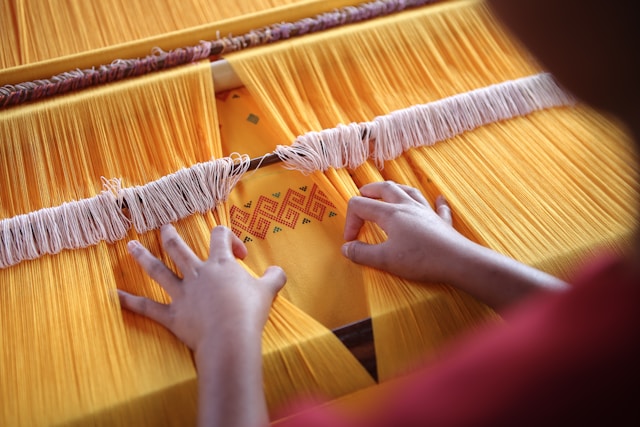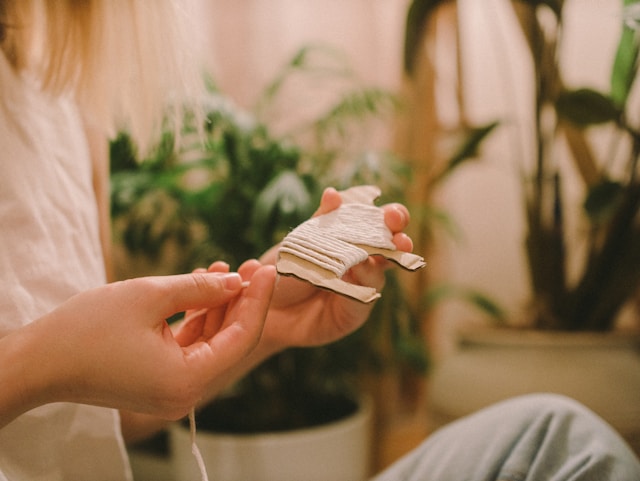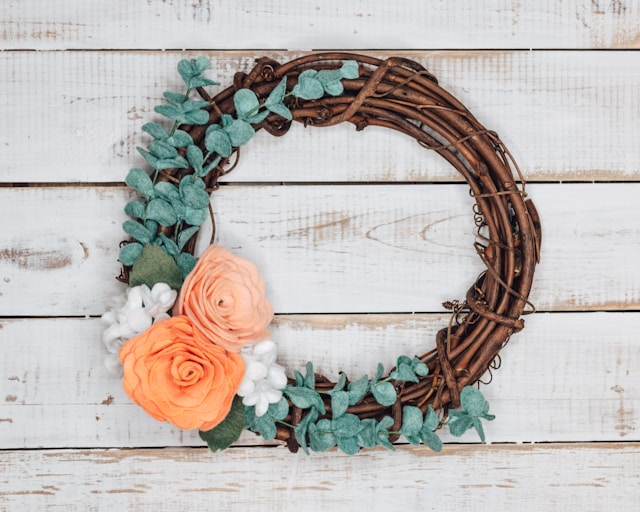Your craft space isn’t just where you store your yarn, thread, or fabric—it’s where you tap into creativity, self-expression, and sometimes even healing. Whether you have a full studio, a dedicated corner, or just a portable project bag, the way you design and interact with your space can deepen your creative experience and make your crafting time more intentional.
By transforming your craft area into a sacred haven, you create a space that supports not just your projects but also your mental well-being, sense of peace, and creative flow. Here are 25 ways to turn your craft space into a place of inspiration, calm, and joy.
Explore this in more depth by joining my Craft to Heal workshop.
🌿 Setting the Atmosphere: Creating a Space That Feels Good
1️⃣ Declutter with Intention – A messy space can lead to mental overwhelm. Keep only what you need within reach, and store the rest in a way that feels organized and calming.
2️⃣ Incorporate Natural Light – If possible, position your craft space near a window. Natural light boosts mood, reduces eye strain, and enhances colors in your work.
3️⃣ Use Soft, Warm Lighting for Evening Crafting – A gentle lamp or string lights create a cozy, soothing atmosphere, making it easier to unwind while working on projects.
4️⃣ Choose a Signature Scent – Essential oils, candles, or fresh herbs can help set the tone for creativity. Try lavender for relaxation, citrus for energy, or sandalwood for grounding.
5️⃣ Play Background Sounds That Inspire You – Experiment with instrumental music, nature sounds, or ambient playlists that help you focus and relax while crafting.
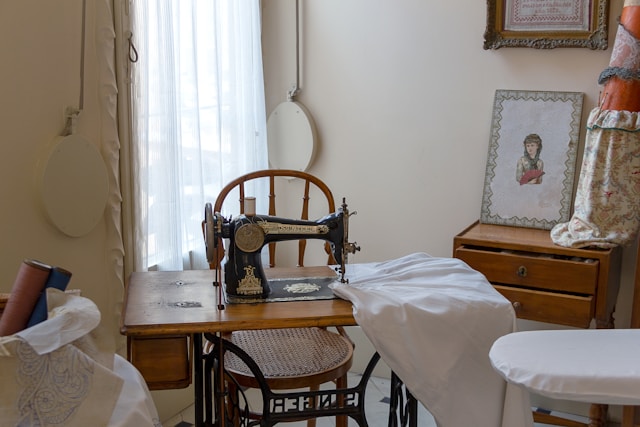
🧘 Designing for Mindfulness & Creative Flow
6️⃣ Make Comfort a Priority – A cozy chair, a soft cushion, or a blanket draped over your crafting spot can make a huge difference in how long you enjoy sitting and creating.
7️⃣ Create a Ritual Before You Start Crafting – Light a candle, take a deep breath, or say a short affirmation before you begin. This signals to your brain that it’s time to enter a creative headspace.
8️⃣ Set Up a No-Stress Zone – Dedicate a part of your craft space to “play” projects—experiments, color tests, or quick creative exercises that have no pressure for perfection.
9️⃣ Display Meaningful Objects – Whether it’s a family heirloom quilt, a handmade gift from a friend, or a fiber art piece that inspires you, having sentimental or symbolic items in your space makes it feel special.
🔟 Create a “Creative Reset” Space – If you start feeling frustrated or creatively blocked, have a corner where you can step away, stretch, or sip tea before returning to your work.
🎨 Organizing Your Materials with Intention
1️⃣1️⃣ Sort Supplies by Color or Theme – A rainbow yarn shelf, neatly stacked fabric, or embroidery thread organized by hue can be both visually pleasing and creatively inspiring.
1️⃣2️⃣ Use Beautiful Storage That Sparks Joy – Instead of generic bins, opt for baskets, wooden boxes, or vintage tins that make you happy when you see them.
1️⃣3️⃣ Keep a “Work in Progress” Section – A designated space for ongoing projects prevents them from feeling like clutter and helps you pick up where you left off.
1️⃣4️⃣ Make Your Tools Easily Accessible – Organize your crochet hooks, knitting needles, or sewing tools in a way that makes them easy to grab without rummaging.
1️⃣5️⃣ Rotate Supplies to Keep Things Fresh – If you feel uninspired, swap out visible materials—bring forward different yarn colors, seasonal fabrics, or a new embroidery hoop.
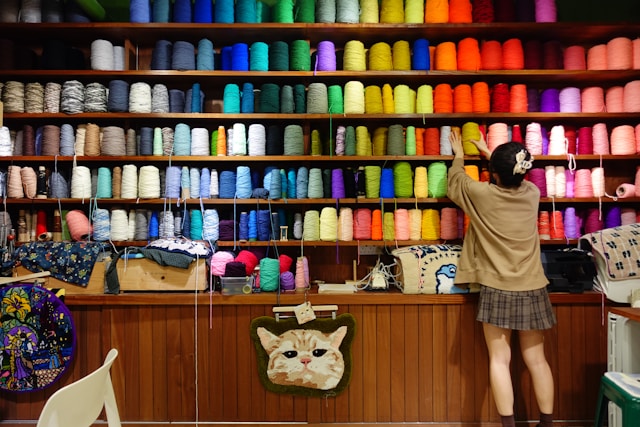
🕊️ Infusing Your Space with Inspiration & Meaning
1️⃣6️⃣ Create a Visual Inspiration Board – Fill a corkboard or wall space with pattern ideas, color palettes, favorite quotes, and personal goals.
1️⃣7️⃣ Include a Journaling or Sketching Spot – Keeping a notebook for creative ideas, stitch samplers, or reflections nearby can add depth to your craft practice.
1️⃣8️⃣ Have a Dedicated Space for Learning – Keep fiber arts books, tutorial printouts, or a tablet for watching instructional videos in one accessible spot.
1️⃣9️⃣ Make Room for Movement – Stretching, standing, or even doing small hand exercises can keep your body comfortable during long crafting sessions.
2️⃣0️⃣ Surround Yourself with Colors That Feel Good – Whether you prefer earthy, grounding tones or vibrant, energizing hues, choose colors that match the mood you want in your space.
💖 Making It a Sacred Space for Well-Being
2️⃣1️⃣ Introduce a Ritual for Finishing Projects – When you complete a piece, take a moment to pause, appreciate your work, and reflect on what you learned.
2️⃣2️⃣ Use Crafting as a Daily Reset – Even five minutes of stitching or knitting can act as a meditative practice to ground yourself after a stressful day.
2️⃣3️⃣ Balance Your Space Between Practical & Personal – Make sure your craft area feels functional but also deeply personal, filled with items that bring joy and comfort.
2️⃣4️⃣ Give Your Space a Name – Calling it your “Creative Sanctuary,” “Fiber Haven,” or “Soul Stitching Space”reinforces the idea that it’s a place just for you.
2️⃣5️⃣ Recognize That Your Space is Always Evolving – Just like your creativity, your craft space doesn’t have to be perfect. Let it grow with you.
Craft to Heal: Using Your Craft Space for Creative & Emotional Well-Being
Your craft space is more than just where you make things—it’s where you process emotions, explore self-expression, and connect with creativity. Craft to Heal is a workshop series designed to help fiber artists bring more mindfulness, meaning, and intention to their creative practice.
Want to explore how crafting can be a tool for healing, relaxation, and self-discovery?
